In-depth: What the abrupt demise of CNN+ tells us
It is an awfully premature demise!
CNN’s news streaming platform, CNN+, will be shut down on April 30, within a month of its much-touted launch.
The last time we heard something similar was the closure of Quibi. The short-form video streaming service, launched during the initial days of the pandemic, lived only for a short period of nine months. Quibi fell short of its subscriber projections. And then there was Seeso, a comedy-focused streaming service by NBCUniversal, which lasted for 18 months before biting the dust in 2017 November.
Ambitious start
AT&T-owned Warner Brothers, CNN’s former corporate owners, had set ambitious goals for CNN+ when it launched on March 29, 2022 with much fanfare, costing $120 million. It was supposed to be the future digital face of CNN.
Jeff Zucker, former President of Warner Brothers, fashioned CNN+ as a ‘versatile digital product’. WB had spent $300 million on the subscription service and had hired star TV hosts like Chris Wallace. Extensive marketing campaigns were undertaken with the hope of attracting around 2 million subscribers in the US alone in the first year and 15-18 million after four years, by which time it hoped to break even.
But things weren’t rosy. For one, CNN+ was not supposed to supplant CNN. In fact, the streamer would not show live news or breaking stories, apparently on account of its agreement with cable networks. What is a news platform without live news? What is the compelling reason for anyone to pay for a platform which only features stuff like talk shows, news debates, and documentaries, and not news? The results are there for the world to see. Contrary to high projections and expectations, less than 10,000 people were using CNN+ on a daily basis two weeks into the debut, according to CNBC Now.
Then came the merger
Warner Media-Discovery merger has been cited as the apparent trigger for the quiet burial of CNN+. Discovery executives were opposed to the idea of CNN+ from the very start. They remained tight-lipped because of regulatory constraints concerning their impending merger with Warner Media. Post-merger, on the very first business day of Discovery’s ownership of CNN, one of the things Discovery’s Global Head of Streaming, JB Perrette, did was instructing CNN executives to suspend all the external marketing activities of CNN+, according to The New York Times. Discovery CEO David Zaslav, too, wasn’t happy with the idea of a standalone news streamer from CNN.
CNN’s incoming President Chris Licht (who will join in May) has made the now-famous analogy to assert his dissatisfaction with CNN+. Licht compared the streamer’s launch to a house being built without ‘any inputs from its intended owner’.
Disastrous decision
Is the abrupt end of CNN+ a reality check on the crowded and fragmented field of streaming business?
It was a foolish thing and it is sensible that they are burying it quickly, said analyst Paritosh Joshi. “It is a way of acknowledging that they have messed up. It has become a subject of ridicule more than anything else. Even a very cursory look will tell you that there is no need in it. It is a damn stupid idea to begin with. CNN+ is a lesson as to what you don’t do in the OTT space,” he affirmed.
“Painful as it must be, I think this is the right decision. The decision clearly isn’t about quality of the output, or even that customers are unwilling to pay a premium for quality news, it’s just that customers need another streaming platform or app like they need a hole in the head,” remarked Teresa Cottam, Chief Analyst at Omnisperience.
Paolo Pescatore, an analyst with PP Foresight, too, called the whole thing as “disastrous”. According to him, people are not accustomed to paying for a news channel when it is effectively free on ad-funded basis. “This, combined with its new corporate parents, effectively led to the nail in the coffin. Standalone services have a poor track record,” he maintained.
“Reality bites, and has bitten,” quipped Harish Bijoor, Founder of Harish Bijoor Consults. “The CNN decision to shut CNN+ is testimony to the fact that news is a commodity and the streaming business is a clutter today. Expenditures to create a solid brand in this space require a lot more space and a lot deeper pockets than ever before,” he opined.
In general, added Pescatore, there are still too many services chasing too few dollars. Therefore, he predicted, there will be further causalities.
On the other hand, Joshi asserted that this is a suo moto decision taken by the CNN management and not based on any market feedback.
TRA CEO N Chandramouli opined that this is more a strategic decision on the back of Discovery’s merger with Warner Media, which adds CNN to the expanded portfolio.
He added, “Such reversal of decisions is to do with existing plans that the merged entity may have, and may not want to duplicate with a new initiative of CNN+. Paid streaming news is still in its inception stage, and it is too early to pull the plug on it based on this decision. Pulling the plug on CNN+ may also be a result of the fact that the plans were overambitious. Ultimately, mergers provide synergies, but they also provide opportunity for cost-cutting, and the axe may be due to this reason.”
Future of news
The CNN+ saga throws up important questions. Will people be ready to pay for news? Will there be a potential for standalone new streaming services?
Karan Taurani, Senior Analyst at Elara Capital, was of the opinion that people won’t be paying for news as a content. According to him, news as a genre has seen a drastic change – from print media to TV to social media. “The relevance of news,” he argued, “is no longer there because there are multiple mediums giving you the same news. It makes it even more difficult for getting the subscribers on board and getting the people to pay for content, because news is something which is very vulnerable.”
“And a lot of news consumption happens in a live way. People use OTT for a lot of catch-up and binge-watching. News consumption remains high on TV. There are news aggregators, digital platforms, which provide you a lot of analytical stuff as well on the news that you get. If you give just news as a content, people won’t be paying for that. In the Indian market, the larger channels that operate – for example Aaj Tak – don’t have their own streaming service, because people are not ready to pay only for news. They operate on a platform-agnostic model. They offer their content to multiple platforms. And that is how they deal with this,” explained Taurani.
Paritosh Joshi, however, has a differing view on this. “I am a strong proponent who will say that good news needs money to be paid for. The argument that news is available freely elsewhere is something which has been vigorously argued and debated in the digital domain ever since Rupert Murdoch challenged the rights of Google to use all news in its search index. Murdoch said that gathering news is an expensive business. You have to put reporters on the ground, create bureaus, etc. There is a massive cost involved in running a journalistic operation. I can’t expect high-quality news to come to me if nobody is willing to cover the costs of all of these,” added Joshi.
Bundling is the key
Bundling, rather than providing a standalone service, should be the way going forward in order to succeed, say analysts.
Paolo Pescatore felt that it made more sense to offer a broad range of programming into a single integrated app offering. “This, in turn, becomes a platform, a one stop-shop window which helps drive value and user engagement. Ultimately, this does feel like the right decision as the service had unrealistic expectations,” he said.
Agreeing with Pescatore, Joshi said that a standalone CNN OTT won’t work. “What will you populate a CNN streaming service with? A standalone service simply doesn’t have enough meat to make it exciting and interesting,” he maintained.
Karan Taurani also subscribed to the view that bundling is the best way. Globally, he said, whoever is giving news content has to be platform-agnostic and they have to tap multiple platforms and that is how they can make sense of the business.
“But if you have only a news-based platform and if you are asking people to pay for that, I think, getting a scale on that is going to be a challenge. Unless you have a compelling service, you can bundle a lot of content with your news. But again, the content has to be exclusive in nature. Getting non-exclusive content which other platforms offer may not do you any good. So, going for a platform-agnostic approach is the only way, wherein the news channels can actually grow well over the medium to long term,” Taurani added.
News providers also need to look beyond geographical limitations, because customers increasingly perceive content in a borderless way, said Teresa Cottam. She cited the example of English-language content going beyond the US to other English-speaking countries (UK, Australia, New Zealand, Canada) and even to those countries where English is a second language (such as Scandinavia and India) to build a subscriber base.
“That’s something the BBC has done successfully. But such an approach has implications for how you present news – you need to shift your editorial voice from being parochial to global. It’s a type of global-local strategy that’s required,” she said.
Standalone service?
Is there a scope for a standalone news streaming service? Very unlikely, says Paritosh Joshi emphatically.
The only standalone news providers that exist are in the B2B space and not B2C. “They have always existed. For example, Bloomberg or Reuters are in effect OTTs also, because they do offer video content. That model is different; it is a syndication model and they are not primary publishers to consumers. We have to conceive the notion of a B2B OTT service,” he asserted.
According to Joshi, today’s infotainment platforms such as Discovery have had to venture into entertainment and children’s programming in a very substantial way. “For example, Dicovery+ realised that it can’t create a complete platform by just populating it with conventional wildlife and nature films. So, it added entertainment. Making yourself as a part of some other large multi-genre streaming service makes perfect sense,” he said.
According to him, CNN should have learned from other examples. “Disney+ has some news networks inside that very broad umbrella. In India, Disney+ Hotstar has all major news networks that they can carry,” Joshi pointed out.
He cited the example of Cinemax in the US, which has always been a cinema platform, or HBO+ or MUBI. While being pure-film platforms, they are all being integrated. So, AppleTV or Prime will take them, so they go inside a larger umbrella.
Joshi further mentioned about the case of BBC iPlayer, which has been around since 2007. “BBC iPlayer, one of the oldest OTT platforms which we don’t give enough attention to, has access to the full range of BBC content. It is not a BBC news platform. It is the British Broadcasting Corporation’s OTT platform. It has everything which BBC offers. Doing a pure-play on CNN doesn’t make sense. A Turner Broadcasting Service, the Turner OTT, with CNN nested inside, makes sense,” he felt.
Taurani subscribed to the view that the world is ready to pay, provided the content is compelling in nature. He maintained, “It is wrong to say that the world is not ready to pay for content. The dynamics of OTT business are such that unless you don’t scale up, unless you don’t have a reasonable amount of ARPU, you will not be able to make profits, because the market is right now getting more and more fragmented. And the content cost is only going off the roof. Unless there is consolidation, unless the number of platforms – both globally and in India – comes down, the content cost only is going to increase, marketing expenses, customer acquisition costs, tech costs, etc.. will only go off the roof.”
Concurring with Taurani’s view, Cottam felt that there’s definitely room for high-quality news content, and that customers valued and understood the need to pay for this.
“It is one type of content that’s missing from the catalogues of many established streaming channels such as Prime and Netflix, and I think to some extent the live aspect is a red herring. People would also value roundups that help keep them up-to-date, in-depth expert reflections on what’s happening, or journalistic investigation pieces,” she added.
Cottam further said, “People don’t want to have to manage yet another billing relationship or to expend the effort to manage yet another app. They want fewer platforms and apps with more content on each.”
“Prime’s approach, with additional channels available for an extra fee, seems to be a more sensible way forward because it simplifies the experience from the customer’s point of view. Adding another channel is easy; there’s only one billing relationship to manage, and the interface is familiar. Likewise, the creator avoids the overhead of managing a platform that eats into their profits without adding much extra value from the customer’s point of view. Partnering on platforms also de-risks the business model and makes it more predictable, and it offers the advantage of leveraging the eyeballs that are already there,” Cottam concluded.



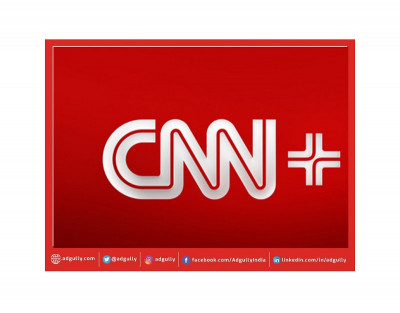
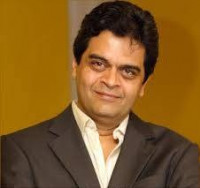

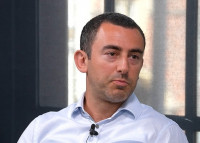




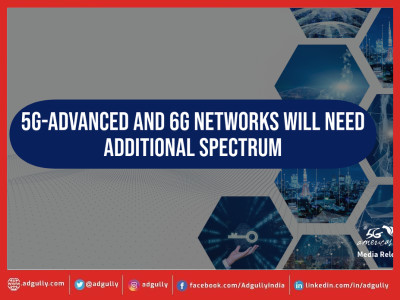

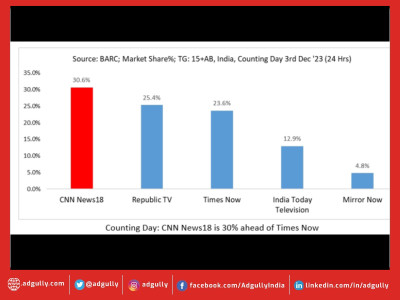
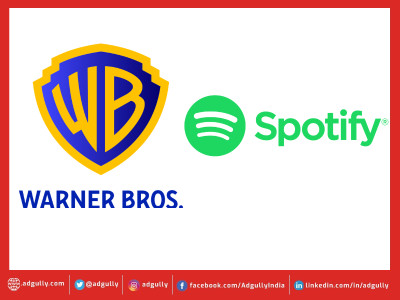



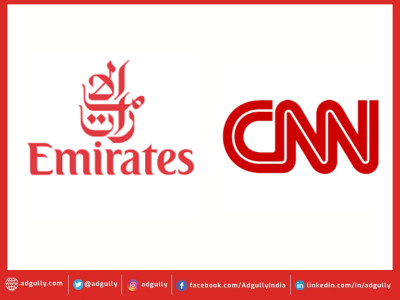

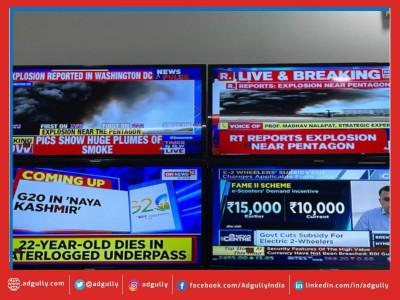


Share
Facebook
YouTube
Tweet
Twitter
LinkedIn